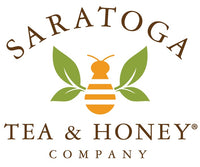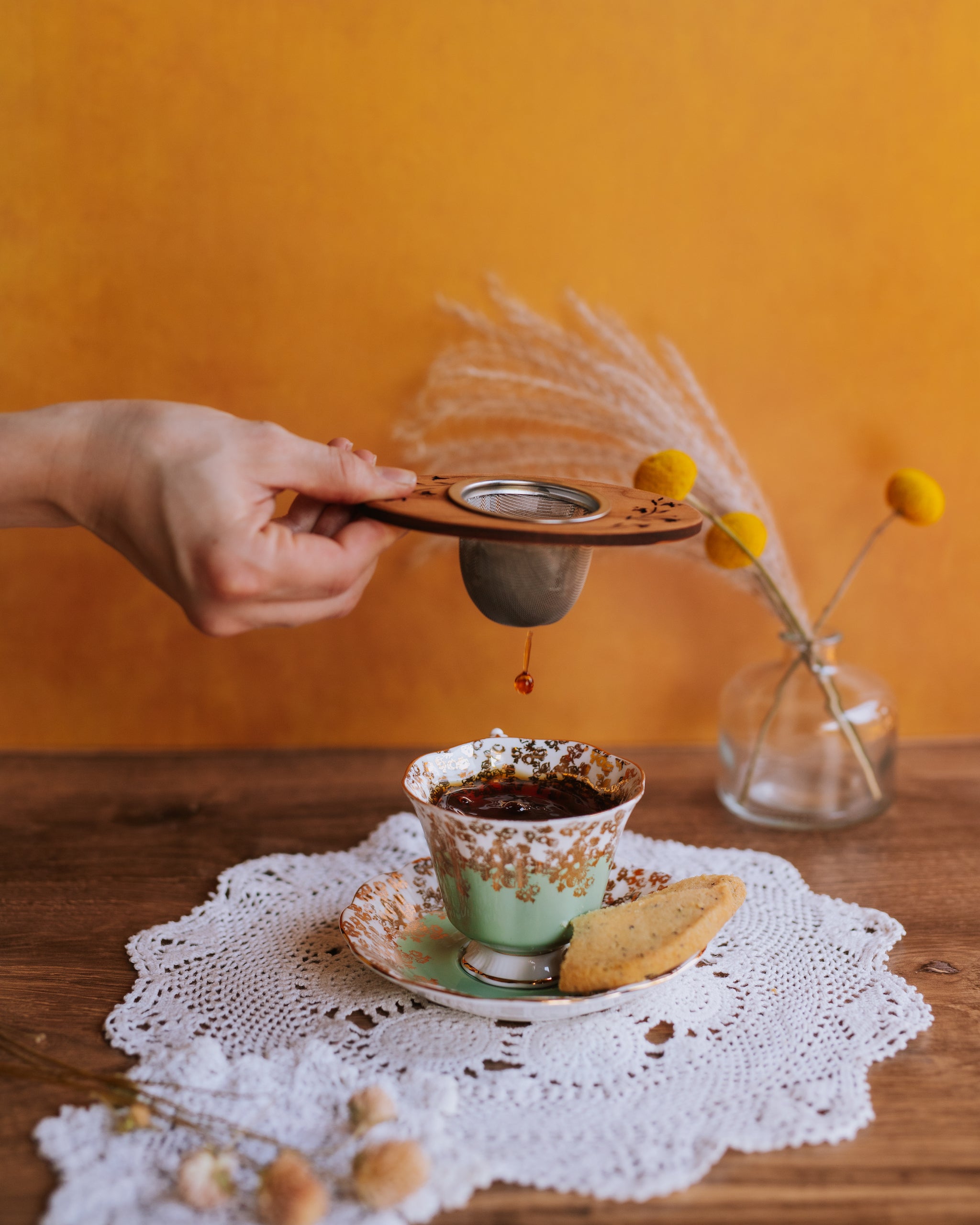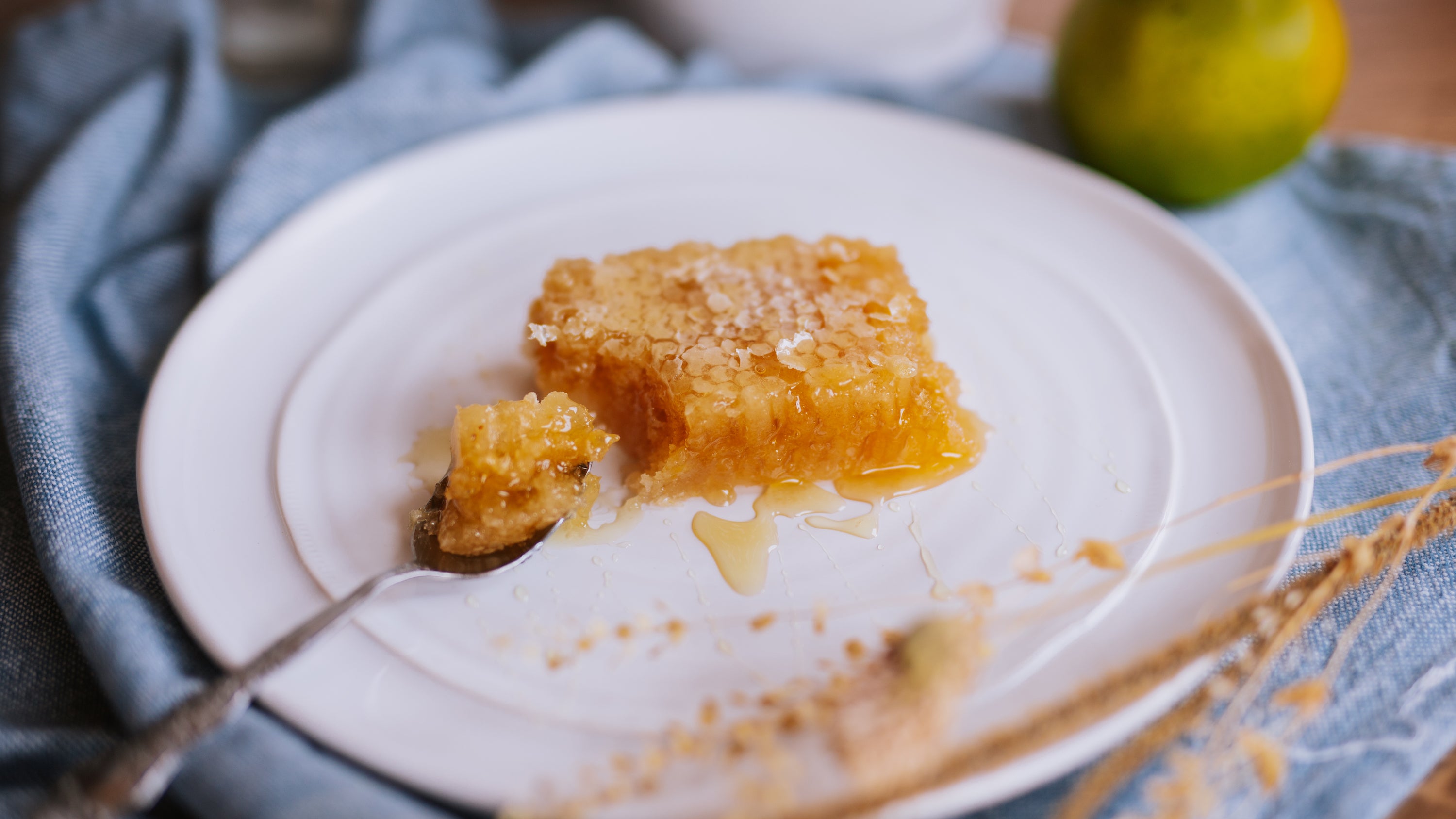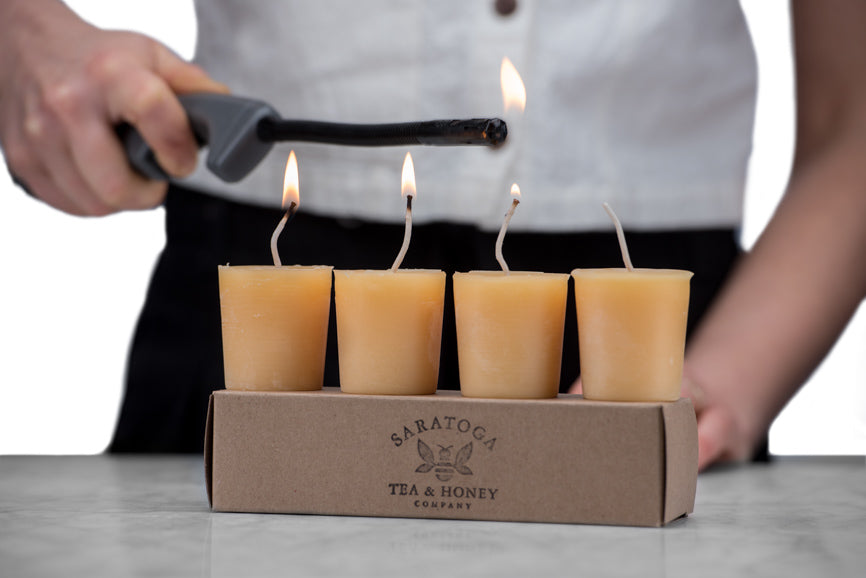
What is Beeswax?
A question that we often hear in our honey room is "What is beeswax?". The simple answer is that beeswax is the construction material of the hive. But over the centuries, humans have found many ingenious ways to use this incredible natural material - from candles to food-safe wraps. Most of us see beeswax products in our honey room and accept that it always has a warm yellow color and a sweetly fresh scent that makes a long- burning candle and we don't even question it. But why is that? What is beeswax used for in the hive and how have we adapted it to use in our everyday lives?

Beeswax & The Hive
Beeswax forms the structure of the hive, which also serves as honey storage. The beeswax comb is constructed around the brood nest, where the queen deposits eggs. The honey is then stored in the combs around the brood nest but will be moved if the hive needs more space for the eggs laid by the queen. The beeswax forms the organization of the hive in order to keep the bee operations running smoothly.
How is Beeswax Made?
Swarm bees, the bees that set out to start a new hive, gorge on the honey stored in their current hive in order to produce the beeswax needed to start their new colony. The bees then digest the honey and convert the carbs into liquid beeswax. Beeswax is produced from a gland in the abdomen of honeybees and is excreted to create the hive itself. The female worker bees have 8 glands in their abdomens to produce the wax when it is time to build the honeycomb. The wax that is secreted hardens as soon as it hits the air and forms a wax scale. (Fun fact! Each wax scale is like a tree, under a microscope you can see the different layers of wax much like you can see the rings on a tree!)
Man-made hives consist of organized boxes and frames that facilitate easy inspection of the hive for beekeepers. Bee colonies draw out comb from the foundation provided to create a network for egg laying and honey production. The worker bees will usually secrete beeswax until they are around 17 days old. The wax glands of older worker bees will atrophy after they begin daily foraging flights.
This seems like an extraordinarily complex process for a little bit of wax, but this also gives a new meaning to the old saying busy as a bee.
Using Beeswax
Beeswax is a food-grade wax with a white color when fresh that develops its characteristic warm, yellow color as bees introduce different pollens to the hive. As a natural storage material, beeswax is hard to beat, and it also makes amazingly fragrant and long-burning candles and excellent body care products.
Explore our beeswax products and their benefits:
Beeswax Candles
From a local company in Saratoga, NY, our beeswax candles have a naturally slightly sweet and fresh fragrance. No two batches of candles are ever exactly the same, often varying in color from a pale gold to a rich, warm yellow depending on what the bees were pollinating! Beeswax candles have long been the gold-standard because they burn brighter and longer due to the high melting-point of beeswax.
Beeswax Honeypot
Gorgeously moulded into a honeypot shape, this decorative beeswax honeypot is a great way to store your honey the way nature intended while adding a bit of visual interest to your counter or shelf!
Bee's Wrap - Beeswax Food Wrap
Sustainable and reusable, this flexible food wrap made from beeswax-coated cloth is the perfect substitute for plastic wrap (and has even been rumored to keep avocados green)!
Beeswax Bodycare by Honey Bee Rich
Honey Bee Rich creates locally made soap and body cremes using not only beeswax, but honey and our tea as well! Beeswax is an excellent ingredient for soap and lotions as it helps to create light barrier that seals moisture into your skin without leaving you feeling oily.
Check out our different beeswax gifts the next time you stop in!
Resources:
Tinto, W.F., Elufioye, T.O., & Roach, J. (2017). Waxes. In Pharmacognosy (pp. 443-455). Academic Press. https://www.sciencedirect.com/topics/agricultural-and-biological-sciences/beeswax
Menezes, J., & Athmaselvi, K.A. (2018). Report on Edible Films and Coating. In Food Packaging and Preservation (pp. 177-212). Academic Press. https://www.sciencedirect.com/topics/agricultural-and-biological-sciences/beeswax
Connor, L. (2015). Beeswax. American Bee Journal. https://americanbeejournal.com/beeswax/
